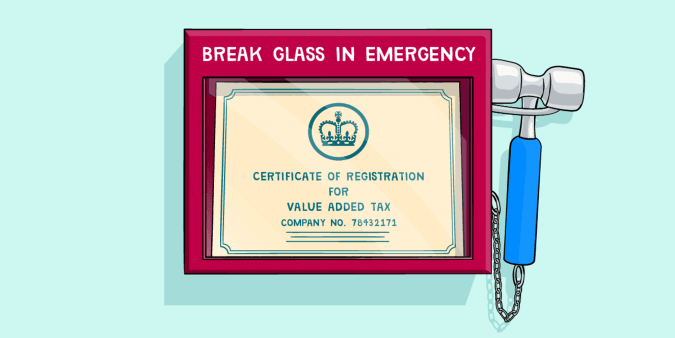What’s changing for small businesses in the 2019/2020 tax year?

Emily Coltman FCA
Chief Accountant

The 6th of April brings the beginning of a new tax year. What’s about to change for 2019/2020?
Updates to Income Tax rates and thresholds
If you’re a taxpayer in England, Wales or Northern Ireland, you’ll be subject to a couple of changes for the 2019/2020 tax year. The tax-free personal allowance, for example, has increased from £11,850 to £12,500.
The new key rates and thresholds are outlined in the table below:
| Details | 2019/20 | 2018/19 |
|---|---|---|
| Personal allowance | £12,500 | £11,850 |
| Employee's and employer's NI becomes due at | £8,632 | £8,424 |
| Higher rate tax becomes due at | £50,000 | £46,350 |
| Class 2 NI becomes due when profits pass | £6,365 | £6,025 |
| Class 2 NI per week | £3.00 | £2.95 |
The government has also adjusted Class 4 National Insurance rates, which you can check out on our rates page.
Changes for Welsh taxpayers
In another update, Welsh taxpayers may pay different rates of Income Tax. The table below lists the rates and bands for 2019/2020:
| Band | Band name | Rate |
|---|---|---|
| £12,501 - £50,000 | Basic rate | 20% |
| £50,001 - £150,000 | Higher rate | 40% |
| Over £150,000 | Additional rate | 45% |
Welsh taxpayers will now notice a ‘C’ appearing at the beginning of their tax code, similar to the Scottish ‘S’ prefix.
Scottish Income Tax
If you’re a Scottish taxpayer, you’ll be subject to a couple of different changes for the 2019/2020 tax period.
| Band | Band name | Rate |
|---|---|---|
| £12,501 - £14,549 | Starter rate | 19% |
| £14,550 - £24,944 | Basic rate | 20% |
| £24,945 - £43,430 | Intermediate rate | 21% |
| £43,431 - £150,000 | Higher rate | 41% |
| Over £150,000 | Top rate | 46% |
These rates and bands apply only to income which is neither dividend income nor savings income. For example, as a sole director of a limited company, you may pay tax on your salary at Scottish rates, but you would pay UK rates on your dividend income.
Pension contributions to rise
The minimum contributions for automatic enrolment pensions continue to increase, with the 2019/2020 total minimum contribution of 5% rising to 8%. As before, the employer and employee can choose to pay more than the minimum contributions if they want to. Alternatively, it’s possible for the employer to pay the total minimum contribution - in this case the employee would not contribute.
The table below shows a worked example of how the total minimum contributions can be met by employer and employee:
| Date | Employer minimum contribution | Employee minimum contribution | Total minimum contribution |
|---|---|---|---|
| Before 5th April 2018 | 1% | 1% | 2% |
| 6th April 2018 - 5th April 2019 | 2% | 3% | 5% |
| 6th April 2019 onwards | 3% | 5% | 8% |
Student loan thresholds increase
From this month, the interest rates and thresholds of income-contingent student loans have been adjusted.
The new threshold for plan 1 has risen from £18,330 to £18,935 - earnings above £18,935 will be calculated at 9%. For plan 2, the threshold for post 2012 loans will rise from £25,000 to £25,725.
The Department for Education has also introduced a new Postgraduate Loan (PGL) for England and Wales. The threshold for 2019/20 is £21,000, to be repaid at a rate of 6%, deductions collected through the normal PAYE process.
You can find out more in our guide to paying your student loan back when you’re self-employed.
Payslip changes
From 6th April 2019, employers are obliged to include the total number of hours worked on payslips for employees whose wages vary by how much time they’ve worked.
National Living Wage/National Minimum Wage updates
As announced in the 2018 Autumn Budget, the National Living Wage (NLW) has now increased by 4.9% to £8.21 an hour for employees aged 25 and over, the highest recorded rise since 2016.
The National Minimum Wage (NMW) has also changed for workers aged 21-24, increasing from £7.38 to £7.70 an hour. The NMW will also rise for those aged 18-20 from £5.60 to £6.15 an hour and from £4.20 to £4.35 for employees under 18.
Our UK tax rates page will help you keep up to date with current rates throughout the financial year. We update all listed rates, thresholds, limits and charges every time a change is made so you’ll always know where you and your business stand.
Disclaimer: The content included in this blog post is based on our understanding of tax law at the time of publication. It may be subject to change and may not be applicable to your circumstances, so should not be relied upon. You are responsible for complying with tax law and should seek independent advice if you require further information about the content included in this blog post. If you don't have an accountant, take a look at our directory to find a FreeAgent Practice Partner based in your local area.


